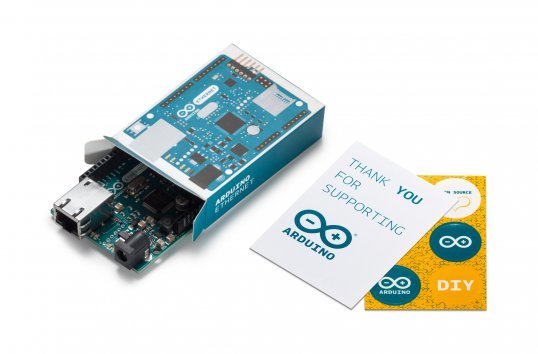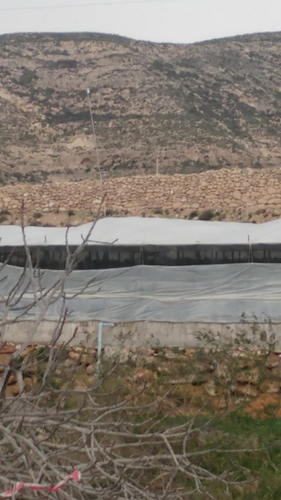Mesh network? am I missing something? Sorry.
I wouldn’t mix ethernet with a Wifi device at all. And I have no experience with W5100 but it seems to not be really stable from what I hear.
Furthermore I agree with @Gunner, it seems bad practice to do it your way. I’d reconsider your entire design. Just add a switch to the last Nano Station, add a regular Accesspoint and use the Wemos’ wireless.
Wifi inside green house is very bad even if nanostation is at 20 meter or less.
*Note I used RF for send signals and the same of wifi when humidity comes to 100% or temperature go down I´ve got no signal or distorsioned. I used ciseco products and discard totally .
Well, that may be so. I’ve tried to hack the Ethernet library for usage with an ESP chip, but I failed. I’m not sure if can be done, so you might have to look for alternatives.
You could for example create and Arduino “gateway” using 433 RF sensors and use those sensors attached to the Wemos to transmit the signals. 433 Mhz should be way more stable and better than wifi because it’s a lower frequency and the 433 Transmitters/receivers work very well on the Wemos. Also the NRF24 could be an option, despite the fact that it’s also 2.4 Ghz. They do too work with the Wemos.
-edit
If the signals are that bad, there is just one option: everything wired.
Trust me I tested 433 mhz and with humidity it doesnt work properly.
A group of individual WiFi repeaters that can spread a single Internet connection across large areas with redundancy. I have installed such a network in a 1km long RV part to connect up to 200 users (and security cameras) to a single Internet connection at the office.
This might work within your greenhouse as they, mesh networks, are also commonly used in Hotels for similar reasons; interference and attenuation from distance through walls.
I you are asking about repeaters with WEP password I also tottally discard . I searched for Wifi networks in my repeater and I detect more than 100 stations so hacking my units could be possible . Repeat signal with WPA is not possible unless I double the units (one receive one send).
The antenna:
What? WPA & WPA2 is encryption, not RX/TX seperation, why would you need to double anything?
Explain me plz I am not understanding you maybe you are asking about the type of comunication. Is possible to do it by RX/TX only
Connect wemos wiring it by tx/rx pins ?
OK, back to basics…
a) Where is the internet connection in relationship to the Greenhouse… approx distance, and is it in line of sight? (EDIT - OK, now I see the greenhouse antenna in the photo… way up there  - does it get a good signal or do you need to upgrade the internet to greenhouse link as well as inside the greenhouse?)
- does it get a good signal or do you need to upgrade the internet to greenhouse link as well as inside the greenhouse?)
b) Once in the greenhouse, How many estimated MCU’s do you need, and what does each MCU need to do (i.e. how many and what type of sensors for each MCU)
c) In every estimated MCU location, do you have power or are you also going battery operated??
a) From Home to Greenhouse raspeberry with blink server is there signal is perfect 100 mb connection it is private lan. I also use it as access point for connect wemos via wifi.
b) I need around 15 sensors based on :
- DHT22
- TENSIOMETERS
- MAGNETIC DOOR SENSORS
- PIR
- FUTURE PRESURE SENSOR FOR CONTROL WATER.
C) I have main 24v (not battery) because is so long distance with less Voltaje I could burn the cable. Everywhere I put energy to have 24v then I could add dc-dc adapters to my needs.
Actually I think I dont use over 15w totally but this will increase.
OK, back to basics…
a) Where is the internet connection in relationship to the Greenhouse… approx distance, and is it in line of sight?
b) Once in the greenhouse, How many estimated MCU’s do you need, and what does each MCU need to do (i.e. how many and what type of sensors for each MCU)
c) In every estimated MCU location, do you have power or are you also going battery operated??
*Wemos accept 24v so dc-dc is not needed because I have 5v and 3v3 output.
The Nano Stations and some of the photos suggest there is a big area to cover. Nano Stations are ideal for this but at the OP indicates it’s not really the distance that’s a problem.
It’s more a problem of the climate inside the greenhouses at up to 100% humidity etc
I suggest rethinking the overall strategy.
Go wired inside the greenhouse with a large multiport switch (in a centralized point in the greenhouse) plugged into your existing wireless link from the house.
Use multiple boards like this one (EDIT: as it is just an OFFICIAL UNO R3 with ethernet built in and taking the same pins as a ethernet shield - it will be fully Blynk compatable): https://www.arduino.cc/en/Main/ArduinoBoardEthernet spread throughout the greenhouse as needed for sensor coverage.

It will have enough power and pins to handle a handful of sensors on each board.
It doesn’t take PoE, but you can easily break out unused twisted pairs and run 12v through them to power each board and sensors (they only need 5v so the extra 7v will cover any voltage drop over distance - no need for 24v and DC-DC adapters).
Move your Blynk server into the greenhouse… and power the server and pseudo 12v PoE links running on 12v battery system with charger. keeps everything running in case power Internet or WiFi link goes down.
Keep it simple, keep the hardware components down (no unnecessary adapters and modifications) and the wired option will work best in the humidity. leaving only a single long distance link to the house for monitoring.
Also consider sealed enclosures for the Arduinos and lots of dielectric grease on any power & ethernet connectors… DC voltage corrodes connections in high moisture environments.
Agree with guys. Using Wemos with Ethernet doesn’t make any sense. There are bunch of powerful MCUs with Ethernet on board. Why don’t you just buy them and save a lot of own time?
Will check it but must work with Blynk 
@kranick If distance is your issue and you still want to be wireless, you should look into a LoRa network. It will easily cover 400m. You can build it with Arduino pro mini or any other board supported by Blynk. I am no expert on it but there is a lot of information on the web about LoRa.
It is good in theory but are there some ready solutions based on LoRa? I mean real production deployments that proved they are working over time?
Yeah, one of the largest TelCo’s here in the Netherlands has got it running, along with some other (big) IT companies. There is definitely merit to it. You can also buy certified LoRa equipment. So yes, there are solutions, but they are not the most cheap ones for now.
@Dmitriy, as I said, I am certainly no expert so I cannot answer your question. However, there are some who feel this is the next big thing and are investing in the technology. As @Lichtsignaal points out, there are expensive boards out there-sodaq.com comes to mind. But there are also cheap alternatives such as the mini pro coupled with a 868 MHz radio antenna like the RFM95 (W) . So, depending on one’s definition of cheap, you could assemble this for about $10 US per node.
So, it could potentially be a cheaper solution then building a wifi network with repeaters, etc. I am not implying the other ideas are not good ones or that LoRa is the best, just another option for @kranick to consider as he prices out his system, especially if he needs to overcome distance issues and wants to be free of cables.
At the end I bought an Arduino Due I plug Shield w5100 and everything working from first time .
I could continue my project. Thanks to everyone.
